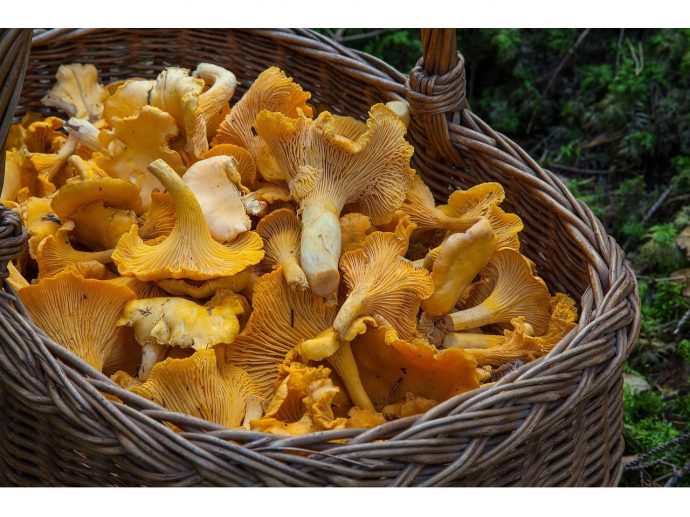Categories more
- Adventures (17)
- Arts / Collectables (15)
- Automotive (37)
- Aviation (11)
- Bath, Body, & Health (77)
- Children (6)
- Cigars / Spirits (32)
- Cuisine (16)
- Design/Architecture (22)
- Electronics (13)
- Entertainment (4)
- Event Planning (5)
- Fashion (46)
- Finance (9)
- Gifts / Misc (6)
- Home Decor (45)
- Jewelry (41)
- Pets (3)
- Philanthropy (1)
- Real Estate (16)
- Services (23)
- Sports / Golf (14)
- Vacation / Travel (59)
- Watches / Pens (15)
- Wines / Vines (24)
- Yachting / Boating (17)
How to use sterilized grain spawn bags to grow mushrooms
Published
11/05/2024If you're interested in cultivating your own mushrooms, learning how to use sterilized grain spawn bags for growing mushrooms can be an essential first step. These provide a controlled environment that encourages solid mycelium growth.
You'll be able to harvest your homegrown mushrooms within weeks. They offer a great introduction into more advanced cultivation techniques, allowing you to understand mushroom life cycles and growing conditions.
Not only does this method save time, but it's also very cost-effective. You can select from an array of different mushroom strains to accommodate your desired yield and taste preferences.
Grain Spawn Bags 101
When you grow mushrooms, sterilized grain spawn bags are crucial. They nurture mycelium, paving the way for flourishing mushroom growth in a controlled environment.
Selecting Your Bags
The type of grain bag affects your results. Bags with a self-healing injection site facilitate easy inoculation, boosting the success of mushroom cultivation.
Consider your strain's nutritional requirements. Varied grains like rye or millet can offer diverse nutrient profiles, enhancing the development of specific mushroom varieties.
Preparation Phase
Prior to use, your bag needs sterilization; this eliminates potential contaminants. Either use pre-sterilized bags or prepare them manually using pressure cooking methods.
Inoculation Process
The inoculation process involves introducing spores into the sterile grain spawn bag. It's done through the self-healing injection site using sterilized syringes or needles.
Keep hygiene a priority during the inoculation process; wearing gloves and masks is essential. This prevents introduction of unwanted microorganisms into your cultivation system.
Mycelium Growth
After inoculating the bags, store them in appropriate conditions to promote mycelium growth. Ideal settings maintain humidity, temperature and air exchange properly.
Avoid abrupt environmental changes as they may stress your growing mycelium web and hinder mushroom proliferation. Your careful handling ensures robust, healthy mushroom yields.
Choosing Your Mushroom Variety
You begin by selecting your preferred mushroom variety. Different types have varying substrate requirements, growth rates, and care needs.
Determine Substrate Preferences
Understand the substrate preferences of your chosen mushroom type. Some favor wood-based substrates while others thrive in grain spawn bags.
Armed with this knowledge, you can provide an appropriate environment that maximizes their potential.
Consider Growth Rate
Growth rate also matters. It varies across mushroom species. Fast-growing types may offer a quicker yield compared to slow-growers.
Ensure Proper Care
Mushrooms need specific conditions to thrive. Temperature, light, and humidity should be adjusted according to the chosen variety's preferences.
Avoid neglecting this aspect as it significantly influences growth and yield.
Incubating and Monitoring Growth
To begin mushroom cultivation, you need to incubate sterilized grain spawn bags at an optimal temperature. Generally, mushrooms thrive at 60-75°F.
Temperature Considerations
Your temperature setting should cater to the specific type of mushroom you're growing. Different species favor different ambient temperatures
By adjusting your settings, you optimize mushroom growth rate and overall yield. Consistency in temperature is key.
Mushroom Growth Checkpoints
Monitor the mushroom growth closely; look for signs of mycelium colonization. These small, thread-like parts are crucial for producing a healthy crop.
Check them periodically, as healthy mycelium resembles white webs that permeate through the bag. They indicate successful colonization.
Fruit Body Formation
The appearance of white pins signals fruit body formation. This is the precursor to the actual mushroom and predicts harvest readiness.
Pins are delicate and require special conditions. Keep humidity high and temperature stable for them to grow into mature mushrooms.
Harvesting the Mushrooms
When it's time to harvest, look for mushrooms with caps fully expanded and curling up at the edges. This implies they are ripe.
Use sterile gloves to handle your mushrooms during plucking. Microbes present on hands can contaminate them, reducing their shelf life.
- Prepare a storage bag: Transfer harvested mushrooms immediately into a clean and airtight container or zip lock bag for storing purposes.
- Twist gently: Gently twist the mushroom stem; if it doesn't easily pull away, wait another day before harvesting.
- Avoid over-harvesting: Ensure you leave some mushrooms in the bag to continue growing and multiplying.
- Store properly: Freshly harvested mushrooms should be refrigerated as soon as possible, consuming within a week for best taste.
Avoid washing right after harvesting, as this could cause early spoilage. Clean them just before consuming or cooking.
If utilized well, sterilized grain spawn bags are a great way to enjoy homegrown, fresh and high-quality mushrooms all year round.
Final Mushroom Thoughts
With careful consideration and patience, you can successfully grow your own mushroom variety using sterilized grain spawn bags. Remember, continuous learning and improvement is integral for yield optimization. Get quality mushroom growing supplies from Gro Magik mushroom grow supply company.















